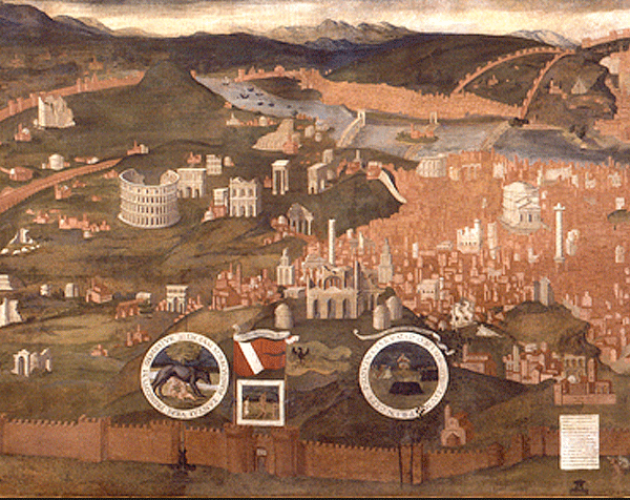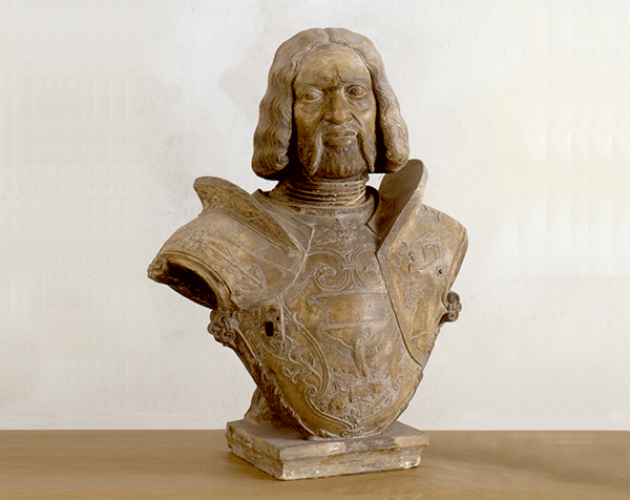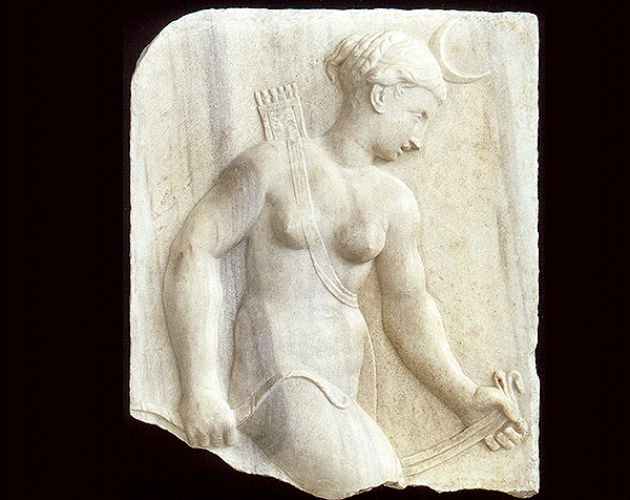Together with the adjoining room of the Briefs, this fine room was added to the main body of the building only in 1511-1512. The Arrow device decoration in the cloister vault is in an excellent state of conservation. The image in the central oculus shows a bundle of arrows tied with a ribbon, alluding to the power of the bond of love. Other important Gonzaga devices can be seen among the emblems in the lunettes, here surrounded by plant garlands. The devices include wings, the dog, the muzzle, the glove and the dove.
The works on display in this section bear testimony to Mantua’s strong attraction during the fifteenth and sixteenth centuries to the Classical age and antiquity. The masterminds behind the transformation of the court and the city according to the humanist culture of the time were, commissioned by the Gonzaga, Andrea Mantegna and Leon Battista Alberti. It was thanks to them and their successor Giulio Romano that Mantua became a vanguard city in Italy, artistically and culturally considered almost as a new Rome. Directly inspired by classical antiquity, the artists created works drawn from original antique models.
This led to artefacts of great refinement which, in their harmony of form and proportions and their meticulous attention to detail, interpreted the spirit of the highpoint of classical culture, arousing a desire for classicism in noble and cultivated patrons, who competed with one another to decorate their palazzi with these works, placing them beside original Roman or even, though very rarely, Greek pieces.






